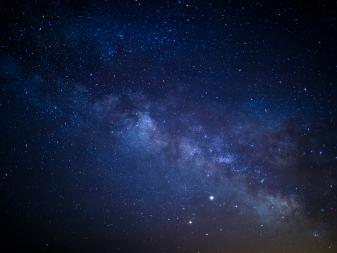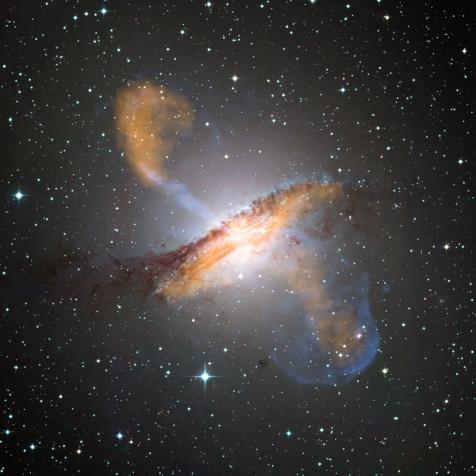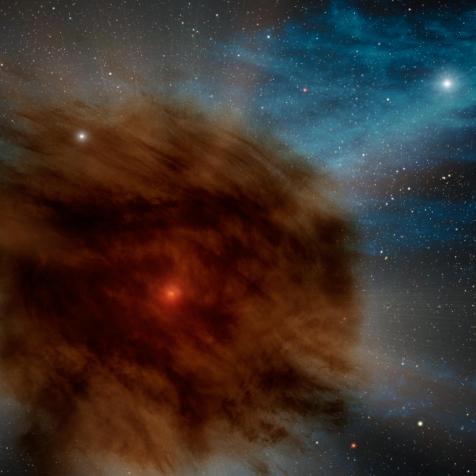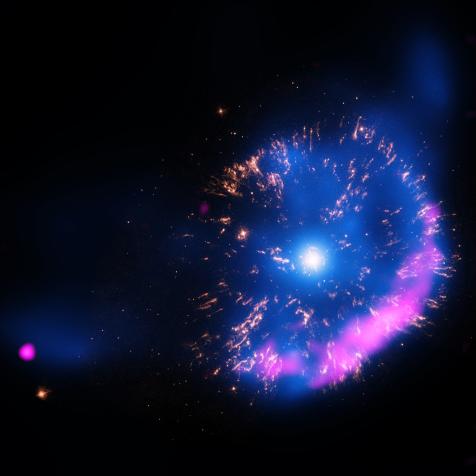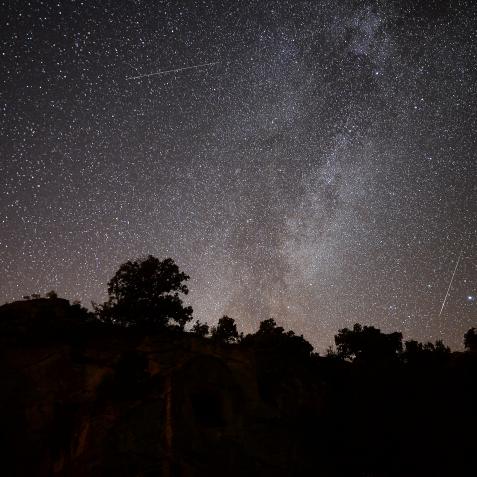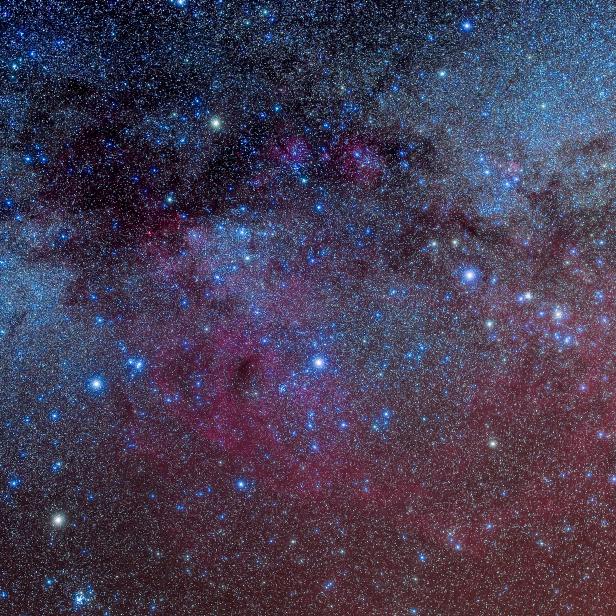
Alan Dyer/Stocktrek Images
Not all Omicrons are Scary

Whether it’s less severe than other variants or not, we can all agree that the Omicron variant of the coronavirus is no fun at all. But despite its ominous name, “omicron” is just the 15th letter of the Greek alphabet. In astronomy, the stars in any constellation are ordered from brightest to dimmest, with the brightest getting the name “alpha”, the second brightest “beta”, and so on. And believe it or not, there are some pretty cool omicrons out there.
Omicron Andromedae – The 15th brightest star in the constellation Andromeda sits about 692 light-years away from Earth. But there’s more to this star than meet the eye – it’s actually four stars in one system! There are two pairs of stars orbiting distantly from each other, with each pair orbiting close.
Omicron Aquarii – In the constellation Aquarius, the traditional name for this star is Kai Uh, from the Chinese name meaning “First Star of the Roof”. This star is a little over 4 times the mass of the Sun but shines more than 340 times brighter. It’s a massive star that is near the end of its life. It has exhausted its supply of hydrogen in its core and is on its way to becoming a red giant.
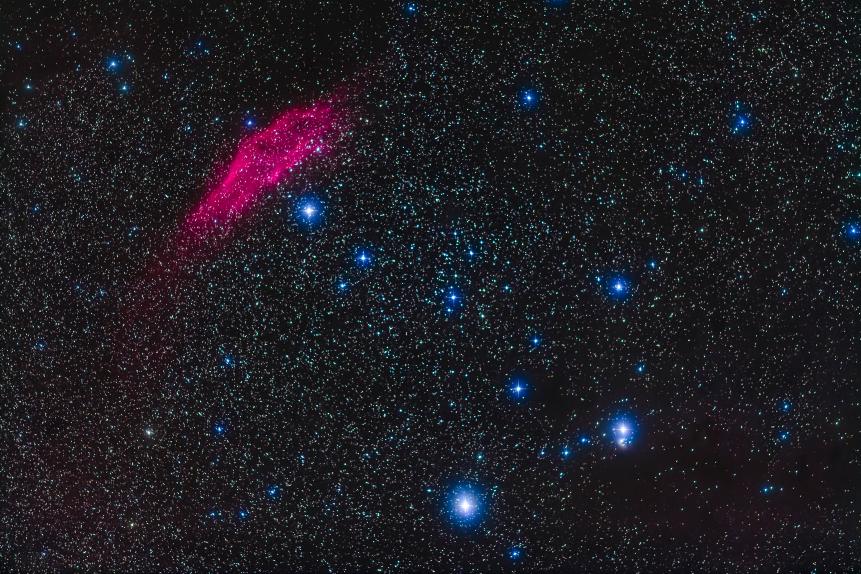
VW Pics
The California Nebula, NGC 1499, at the top left, with the bright star Zeta Persei. A faint region of reflection nebulosity, IC 348, surrounds the star Atik, or Omicron Persei, at the bottom right.
Omicron Persei – About 1,100 light-years away from us, this star in the constellation Perseus is not one, but two. The bright main star – traditionally called Atik for “the shoulder” in Arabic – has a small companion. That companion is so close that a single orbit takes less than 5 days.
Omicron Coronae Borealis – This is an incredibly faint star in the constellation Corona Borealis, visible to the naked eye only on the darkest of nights with the clearest of skies. It’s about 270 lightyears away, and it too is near the end of its life. However, it’s not a very massive star, weighing less than 10% of the sun. But because it has burned through all its available hydrogen, it has swollen to stretch over 10 times the radius of the Sun.

NASA, JPL-Caltech, GALEX, C. Martin (Caltech), M. Seibert (OCIW)
To seventeenth-century astronomers, Omicron Ceti or Mira was known as a wonderful star, a star whose brightness could change dramatically in the course of about 11 months.
Omicron Ceti – This is perhaps the most famous of all the omicrons in the night sky, located in the constellation Cetus. In 1662 the astronomer Johannes Hevelius nicknamed this star Mira, from the Latin for “wonderful” or “astonishing”, and the name stuck. He was so awestruck by Mira because its brightness varied so much so that it would cycle between visible and too dim to see every 11 months. Later astronomers would discover why. Mira, along with a few thousand other stars known as “Mira variables” pulsate, with their outer layers swelling and shrinking, causing them to brighten and dim on a regular basis.
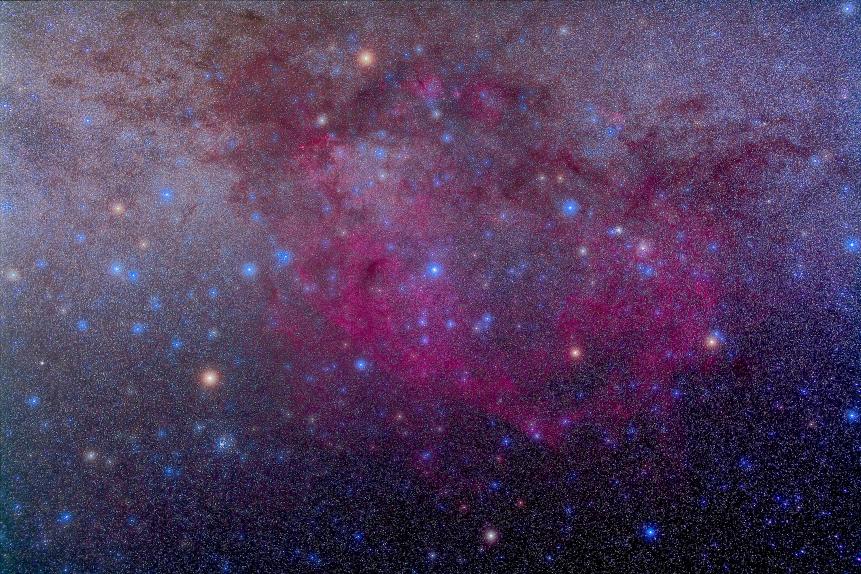
Alan Dyer/Stocktrek Images
The extensive Gum Nebula area in the constellation Vela, an interstellar bubble blown by winds from hot stars, with the False Cross at left. Star clusters NGC 2516 (below False Cross) and IC 2391 (right of false Cross) stand out. Superhot star Gamma Velorum is at the center.
Omicron Velorum – As a star in the constellation Vela, it’s not too special. It’s about 495 light-years from Earth, is blue-white and big, and that’s about all you need to know. What’s most interesting is that this star is the brightest of a cluster of stars visible to the naked eye. The cluster is called IC 2391, or more regularly the Omicron Velorum Cluster. It was first described by the great Persian astronomer Al Sufi in 964 and remains a delight to stargazers today.
Dive Deeper into the Universe
Journey Through the Cosmos in an All-New Season of How the Universe Works
The new season premieres on Science Channel and streams on discovery+.









